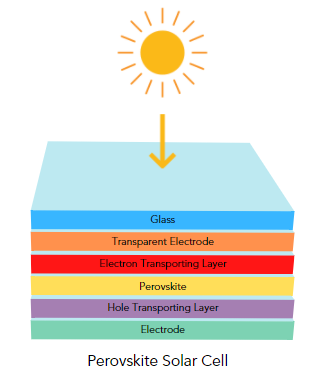
The Promise of Perovskite Solar Cells: Revolutionizing Renewable Energy
In the quest for sustainable and efficient energy solutions, solar power stands out as a promising contender. Among the various technologies driving this revolution, perovskite solar cells have emerged as a game-changer. With their unique properties and rapid advancements, perovskite solar cells are poised to revolutionize the solar energy industry. This essay explores the science behind perovskite solar cells, their advantages, challenges, and the potential they hold for a greener future.
Understanding Perovskite Solar Cells
Perovskite solar cells are named after the mineral perovskite, which has a crystal structure of calcium titanium oxide (CaTiO3). In solar cell applications, “perovskite” refers to a broad class of materials with a similar crystal structure, typically involving a combination of organic and inorganic components. These materials have the general formula ABX3, where ‘A’ is an organic cation, ‘B’ is a metal cation (such as lead or tin), and ‘X’ is a halide anion (such as iodine, bromine, or chlorine).
The unique structure of perovskites allows for exceptional light absorption and charge-carrier mobility, making them highly efficient at converting sunlight into electricity. Since their introduction in the late 2000s, perovskite solar cells have demonstrated remarkable improvements in power conversion efficiency (PCE), rapidly climbing from initial efficiencies of around 3% to over 25% in laboratory settings.
Advantages of Perovskite Solar Cells
1. High Efficiency: One of the most striking features of perovskite solar cells is their high efficiency. The rapid improvement in their performance has outpaced that of many other solar technologies. This high efficiency means that perovskite solar cells can generate more electricity from the same amount of sunlight compared to traditional silicon-based cells.
2. Low Cost: Perovskite solar cells have the potential to be significantly cheaper than their silicon counterparts. The materials used in perovskites are abundant and inexpensive, and the manufacturing processes are less energy-intensive. Techniques such as solution processing and spin coating are simpler and cheaper than the high-temperature processes required for silicon cells.
3. Versatility and Flexibility: Unlike traditional rigid silicon cells, perovskite solar cells can be fabricated on flexible substrates. This flexibility opens up a wide range of applications, from lightweight solar panels that can be integrated into building materials (building-integrated photovoltaics or BIPV) to portable and wearable devices.
4. Simple Manufacturing: The manufacturing process for perovskite solar cells is relatively straightforward. Solution-based processes allow for easy scalability and potential for large-scale production. This simplicity could lead to faster deployment and adoption of solar technology globally.
Challenges Facing Perovskite Solar Cells
Despite their numerous advantages, perovskite solar cells face several significant challenges that must be addressed before they can achieve widespread commercial use.
1. Stability: One of the most pressing issues is the stability of perovskite materials. They are highly sensitive to environmental factors such as moisture, oxygen, and light, which can lead to degradation over time. This instability affects the long-term performance and reliability of the solar cells.
2. Lead Content: Many high-efficiency perovskite formulations contain lead, raising environmental and health concerns. Lead is toxic, and its use in large-scale applications could pose serious environmental risks. Researchers are actively working on developing lead-free perovskite materials that do not compromise efficiency.
3. Scalability: While lab-scale efficiencies are impressive, translating these efficiencies to large-scale manufacturing while maintaining quality and performance is challenging. Ensuring uniformity and reproducibility in large-area perovskite solar panels is a critical hurdle to overcome.
Recent Developments and Future Prospects
Research in perovskite solar cells is advancing rapidly, with scientists exploring various strategies to overcome the existing challenges.
1. Improved Stability: Researchers are developing new materials and encapsulation methods to enhance the stability of perovskite solar cells. These include the use of protective coatings and innovative material compositions that are more resistant to environmental degradation.
2. Lead-free Perovskites: Efforts are underway to identify and develop lead-free perovskite materials. Tin-based perovskites and other alternative compositions are being investigated to mitigate the environmental impact while maintaining high efficiency.
3. Tandem Cells: Combining perovskite solar cells with traditional silicon cells to create tandem cells can significantly improve overall efficiency. Tandem cells can capture a broader spectrum of sunlight, leading to higher energy conversion rates.
Conclusion
Perovskite solar cells represent a revolutionary advancement in the field of renewable energy. Their high efficiency, low cost, and versatility make them a promising candidate for the future of solar power. While challenges related to stability, environmental impact, and scalability remain, ongoing research and development efforts are paving the way for their widespread adoption. As these obstacles are addressed, perovskite solar cells have the potential to transform the global energy landscape, contributing to a cleaner, more sustainable future.
